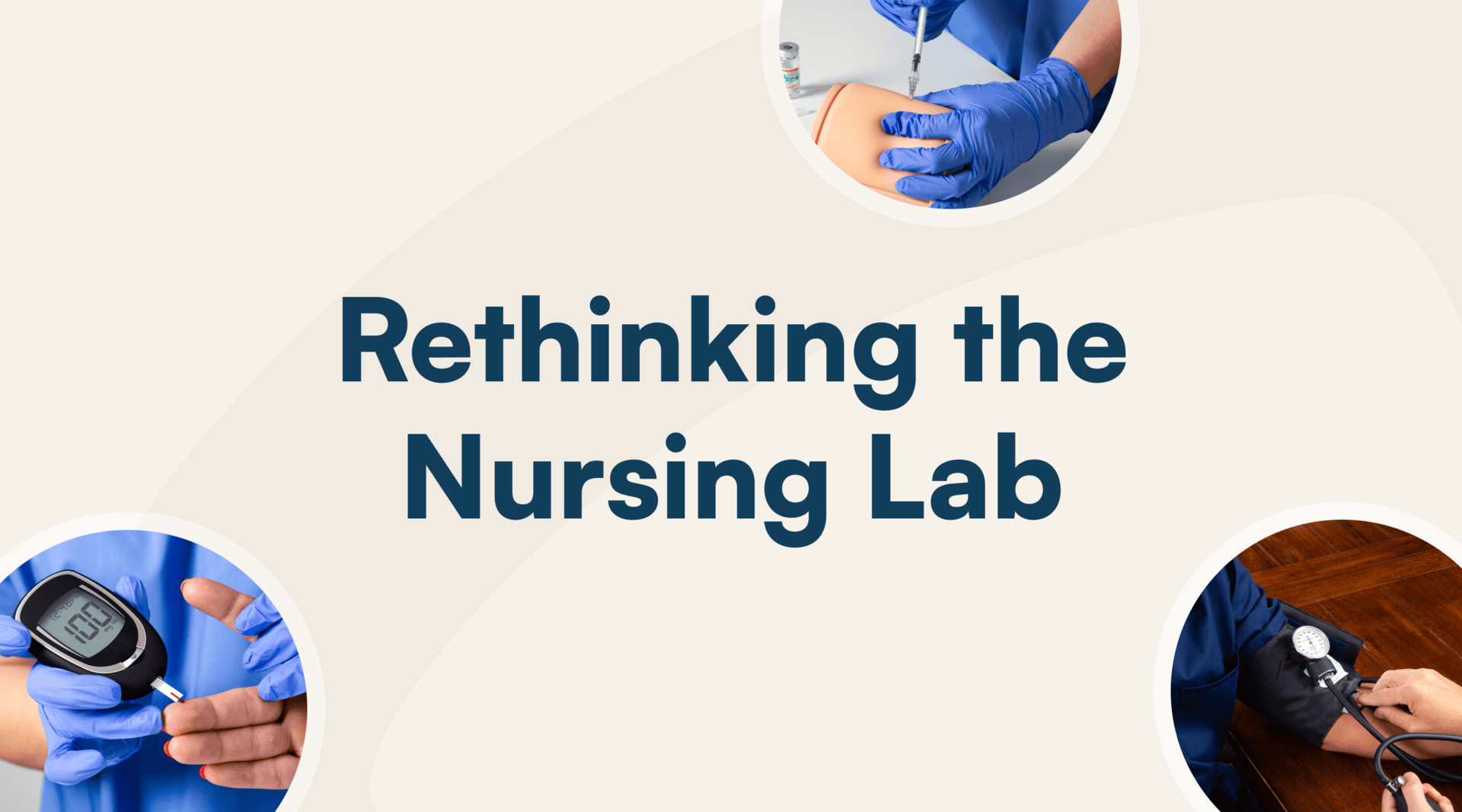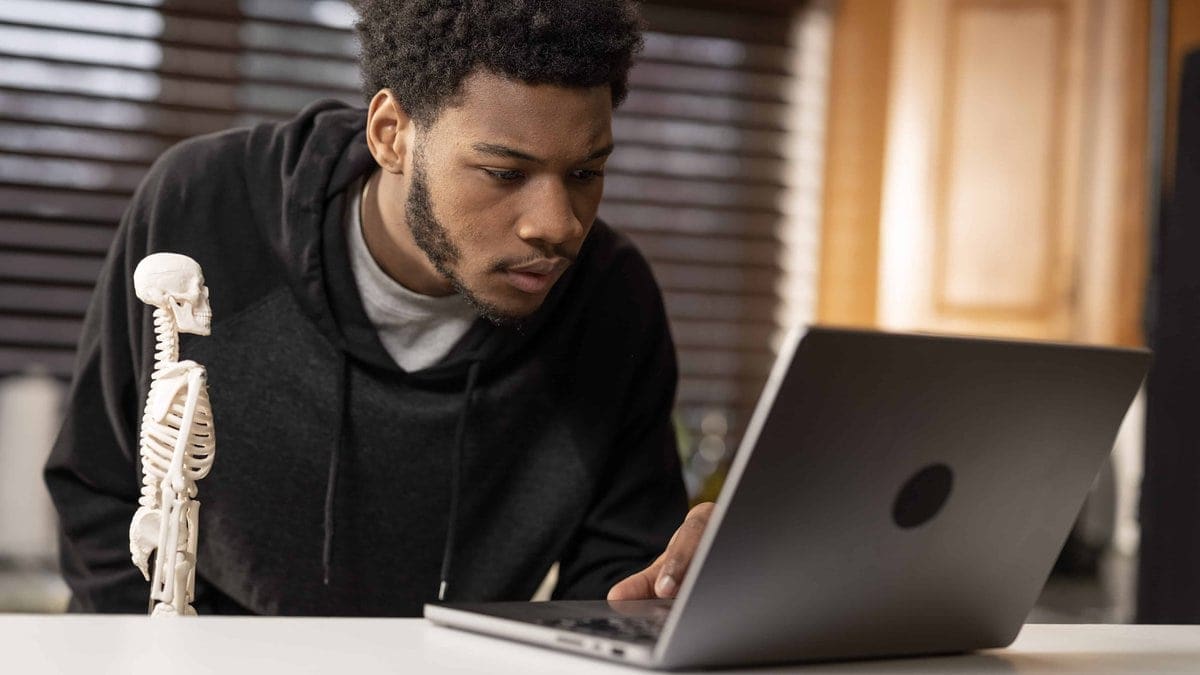In the popular romcom How to Lose a Guy in 10 Days, we learned what happens when two people have misaligned expectations of how something will go; and, thankfully, while we have more than 10 days in our scenario, we still don’t have a lot of time to turn it around. When students sign up to take your online science lab course, they’re interested in the subject you’re offering — but then something happens. A lab gets turned in late. The next is missing images. You’re noticing less insightful analysis as assignments go on. Questions dry up, and before you know it, you’ve been ghosted.
Luckily, we know the common causes for online student disengagement, and in this article, we’re exploring the best ways to keep students engaged so they have an effective and meaningful online learning experience.
Who Are Your Online Students
Before we get into it, let’s take a look at who your online students are. EDUCAUSE credits the growth of online learning to its ability to broaden reach and increase the accessibility of higher education, which has created a unique student population. While campus-based and online learners may pursue the same credentials in many of the same majors, you’ll find online students’ goals and demographics can be quite different.
Many of the students who take your online science labs might be nontraditional, first-generation or under-represented students looking to earn degrees, grow their skills, and advance their careers. While the highest percentage of online learners fall between the ages of 25 and 29, online programs tend to attract a larger share of students who work full or part-time, single parents or parents with at least one dependent, and older students who delayed college or are seeking a second degree.
It’s also important to know that those students who participate in online courses tend to struggle more than those in face-to-face courses, and as a result, online courses typically have a 10-20 percent lower retention rate than traditional courses. These students face significant barriers to participation, like juggling multiple responsibilities, the lack of face-time with instructors, or the sense of isolation online learning causes — which is why it’s so much easier to lose an online student, especially if you do these things.
How to Lose an Online Student: Assume Students Are on Track
In general, students don’t plan well. Most have never taken an online science lab course, and they’re all coming into your course with different levels of requisite knowledge — that includes anything from knowing how long a lab should take to the names of certain pieces of equipment. So how you kick off your course will set the tone for a student’s level of engagement — and if expectations for support and guidance are unclear from day one, you’re starting in the hole.
Do This Instead: Set Expectations & Provide Ongoing Guidance
Providing clear expectations and guidance for how and when to complete course activities is important. In fact, Cheston Saunders, a biology instructor at Southeastern Community College, says that anticipating student questions is crucial for his online students’ success.
“I often have friends review assignment instructions to see if instructions are clear. It’s also helpful to include videos and images that walk students through what the equipment and chemicals are for each lab. Including instructor-produced videos also helps students realize that I’m invested in their success.”
In addition to these, consider the following tactics to set the stage for student success in your course:
- Remind students how and where to find course material, and explain how that material aligns with the objectives of the course.
- Keep due dates for important labs and assignments top of students’ minds and make sure a syllabus and online rubric tied to the course’s learning outcomes are highly visible.
- Provide resources and step-by-step instructions for each experiment, including how long each may take so they can plan accordingly at home.
- Anticipate potential questions from students and prepare a quick FAQ resource for each experiment — especially helpful for students new to taking labs online.
- Use tools to share ongoing feedback with students so they have an opportunity to improve for the next lesson.
You can use lab management tools that make providing that feedback easier. With tools like this, you can focus your time on giving quality ongoing feedback to help students improve, which is proven to motivate students to continue engaging in your course. As an added bonus, you can also leverage assessment analytics in those tools, which help you identify students who may be falling behind in certain areas — giving you the opportunity to provide an extra layer of guidance that gets them back on track.
How to Lose an Online Student: Keep it Entirely Digital
If you’re looking to lose an online student quickly, make sure all of your lessons are digital — that is, virtual science labs. These online science lab simulations are often defaulted to in online science lab courses because they are easier to implement than hands-on science experiments. However, when used as the singular form of learning throughout a course, studies have shown learning is less effective. Clicking through a simulation becomes repetitive. Students end up just checking the box, and a result, learning suffers.
Do This Instead: Create the Right Mix of Virtual & Hands-On Science
Use an intentional blend of both virtual and hands-on science labs. Identifying some lessons that can be done virtually will keep course costs reasonable, allow students to easily repeat experiments as needed, and supplement hands-on experiments. At the same time, choosing hands-on labs will help you create a more effective learning environment in which students can more easily connect course concepts to the real world and gain a deeper understanding of the concepts you intend to teach, just like it did for this student.

Unlike virtual science labs, the hands-on kits used during these experiments will give students the authentic experience of using equipment and carrying out experiments, just as they would in a traditional lab — building the physical skills required in science labs as well as expanding students’ abilities to problem solve and think critically. In fact, research out of Stephen F Austin State University shows that student participation in hands-on lab experiences vs computer simulated experiences actually improved students’ attitudes and interest in the topic being taught, kept students more engaged, and led to new skill building and better performance.
As a form of experiential learning, hands-on experiments break students out of their usual passive modes of learning, which is thought to activate students’ learning styles. The theory around learning styles posits that different students learn best when information is presented to them in a particular way.
- Kinesthetic: tactile learning
- Visual: seeing and observing
- Auditory: hearing and listening
- Reading and Writing: subtype of visual with emphasis on writing for understanding
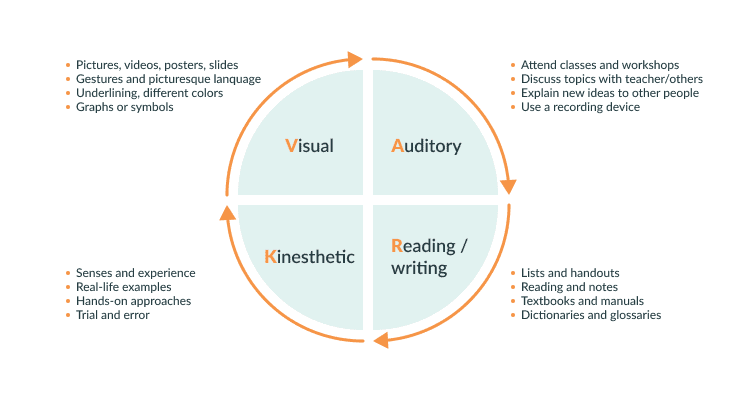
When you use hands-on experiments in your course, you’re able to reach ALL of your students because each type of learner benefits from the experiential activity. Through the process of conducting an experiment — from setting up to observing reactions and sounds to logging and analyzing results — each kind of learner has an opportunity to engage just a bit deeper with your course material in a way that suits them and that leads to stronger critical thinking and problem solving skills.
Just take the online biology students at Richmond Community College as an example. Instructor, Dr. Lori Frear engages her students in the process of observing biological phenomena, generating testable hypotheses, and collecting data using lab kits that contain the equipment and materials found in a formal lab facility. She finds that students have a more enriching experience that demands ownership over their learning and requires a higher level of accountability than digital-only labs.
How to Lose an Online Student: Double Down on the Text
A surefire way to scare students away is to keep course materials and assignments heavy on the text. Students are digital natives and accustomed to communicating and learning through a variety of media, especially video. When you consider that 80% of people use YouTube and video to learn something new or improve skills that will help them prepare for the future, it’s a no-brainer that incorporating multimedia will better engage students.
Do This Instead: Leverage Multimedia for Content Delivery
Consider employing a variety of multimedia, including video, to deliver your course content. Journal articles, podcasts, case studies, video, and interactive learning objects are just some of the ways you can deliver concepts to students. Share perspective through recorded video microlectures to synthesize key concepts and provide friendly video reminders around expectations. When you offer instructional content and resources in a variety of ways, you’re going to be able to reach a broader set of students whose abilities and learning styles all vary.
Similarly, encourage students to submit assignments using a variety of multimedia options, from pictures and video to written text and audio. Have students introduce themselves through pictures or video as they unpack their laboratory kits. During experiments, have each student produce a live video feed (kind of like a story or reel) while doing the work or take pictures of the key steps. Offering students a choice in how they show evidence of completing their labs but still fits within your parameters gives students a broader range of expression, entices them to participate in the ways that work best for them, and as an added bonus, supports greater academic integrity.
How to Lose an Online Student: Ignore the Need for Connection
Learning online can be lonely. In a 2017 survey of 48,000 college students, 64 percent said they had felt “very lonely” in the previous 12 months — putting them at high risk for severe depression — according to the American College Health Association. That stat is likely even higher for online students.
According to Albert Bandura’s social learning theory, people learn best by observing and interacting with others. They acquire new knowledge and skills by watching others’ behaviors and attitudes, and related outcomes. So without the built-in social interactions of traditional in-person labs, online learning can make students feel isolated — leading to decreased motivation and a potential decline in mental health and academic performance.
Do This Instead: Create Opportunities for Collaboration
Work to enable connection, collaboration, and community. While some argue that facilitating student collaboration in an online lab environment is challenging, consider that when students interact with their peers on work, their level of engagement rises and motivation improves — a key indicator of student success and achievement. With more engaged students, you’ll see participation increase, which is the fuel for creating community in your online course.
Like many aspects of teaching, helping students develop a sense of belonging and community can impact learning in both face-to-face and online courses, but attending to these dimensions in an online science lab takes intentional planning. For instructor-to-student communication, instructors should take steps to connect with their students via digital channels, including email, chat, online discussions, or virtual office hours, in order to compensate for the loss of natural face-to-face cues and communication. This starts to build a sense of belonging for each student in your course.
“Students are often focused on getting the “right” data, but in science, failed experiments can still provide a lot of insight. I have students share their data on the discussion board and then compare and contrast with that of classmates. They can then try to figure out what may have gone wrong, just like in a real lab setting.”
Cheston Saunders, Biology Instructor, Southeastern Community College
When students feel they belong to a class community, they are more likely to be motivated to complete class work, feel safe enough to ask questions or for more help, and be open to feedback that can help them improve. You can:
- Create online lab partner pairs, similar to lab partners in campus labs. Pair up students at the beginning of the course, so each student has built-in peer support and someone they can go to — besides you — to ask questions and share experiences. Encourage them to communicate via course chat, text, and video.
- Engage students in a course discussion about a particular lab as part of the class curriculum to help them not only improve their critical thinking skills but also encourages them to engage with others in the class in a meaningful way. Establish this conversation as a forum to connect with each without the pressure of a graded assignment.
- Create a Q&A board for the class so students can post questions and crowdsource responses.
- Host virtual office hours to make yourself available to students, especially important when you don’t see them face-to-face throughout the week. Virtual office hours can be as simple as web conferencing with an individual or small group of students. Or it could involve adding a chat for those students, who just want to have a brief connection.
- Send students off into their own small-group discussions to share their lab results for particular experiments on your course discussion boards; have them compare and contrast results and hypothesize why there might be differences.
- Incorporate students’ experiences and expertise. Students come to your course with a wide range of knowledge and experiences, and have insights to share. For example, invite students, independently or in small groups, to solve organic chemistry problems in front of their peers (virtually) and explain their solutions. Involving students as teachers heightens interdependence, mutual respect and engagement — all of which are valuable in community building.
- Give students space to connect virtually via group projects and optional synchronous meetings to keep them engaged.
At BrightPoint Community College, Professor Tamara Balgojevic has her students perform hands-on chemistry experiments independently, but then sorts her students into smaller groups to work through the lessons together. This enables students to collaborate and learn from one another throughout the course, which Blagojevic says works to better reinforce the lessons and help students more easily apply course concepts to the real world. Class community is stronger, and the discipline is made to feel more relatable and less intimidating for students.
How to Engage Your Online Students
Generally speaking, learning improves when students are inquisitive, interested, or inspired, and learning tends to suffer when students are bored, dispassionate, or disaffected. These strategies are intended to help you engage students from the start, but also work to get students back in the game — before you lose them for good.
When you add in factors like trying to fit in lab work amid an array of competing priorities, online students become more prone to disengagement. But with these strategies in your toolkit, you’ll be able to build an online lab course that activates students’ learning styles, enables connection and community, and, ultimately, mirrors the authenticity of a traditional on-campus lab experience — all of which work to keep your students motivated and more engaged.
If you’re interested in learning how to create a more engaging, authentic lab experience for your online students, we can help.
Discover more articles
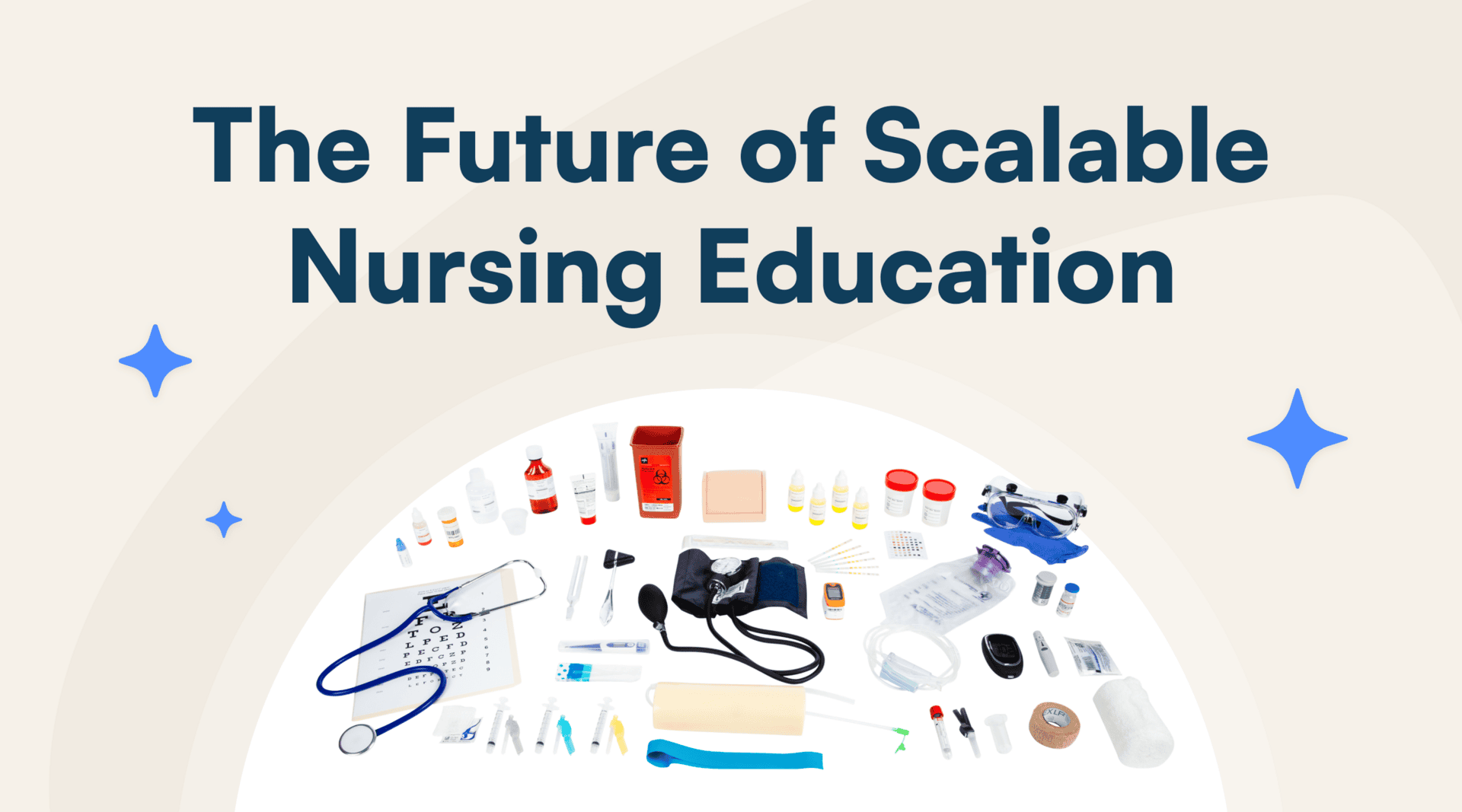
Science Interactive Launches New Nursing Fundamentals
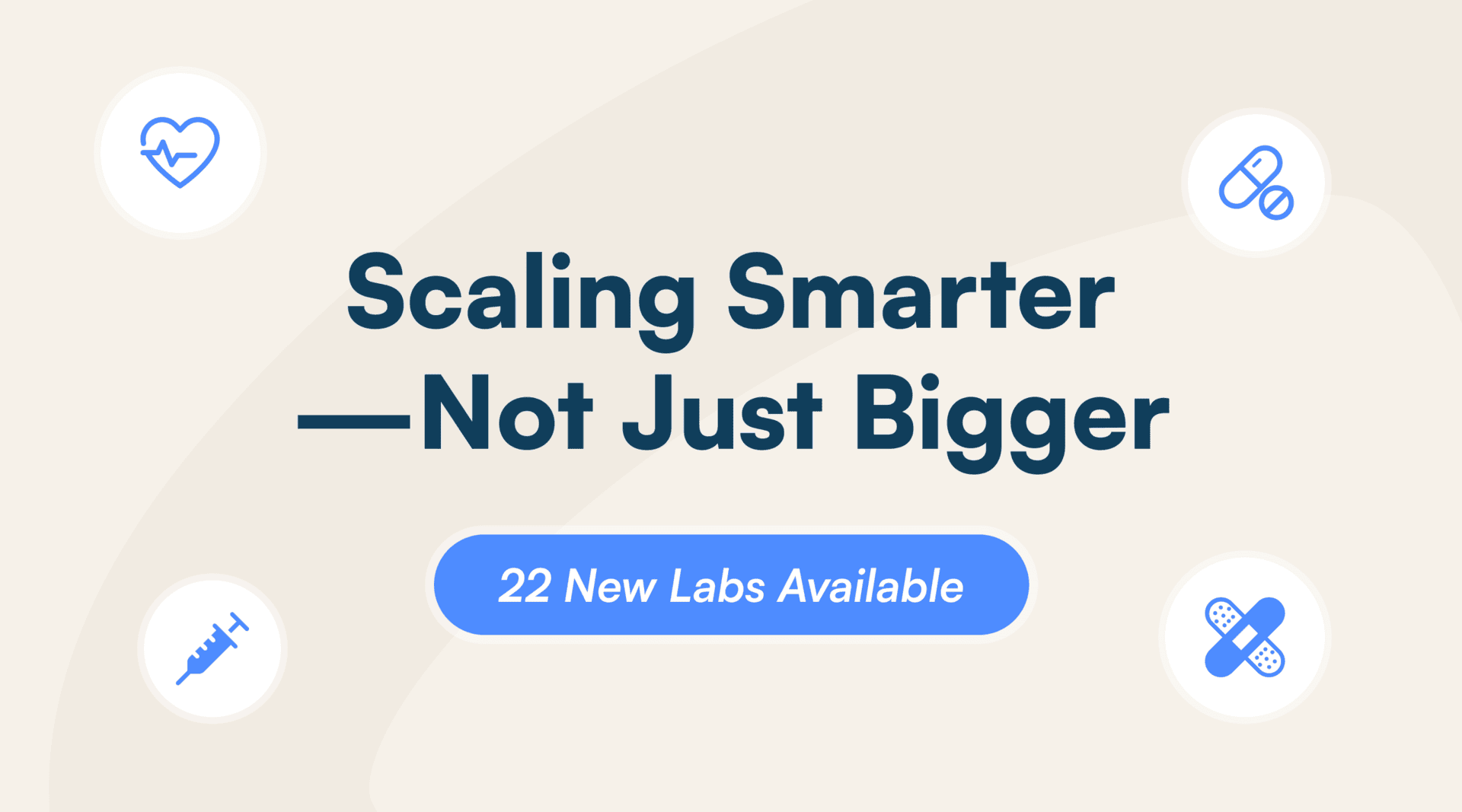
What Clinical-Ready Actually Looks Like (And How to Get There Sooner)
